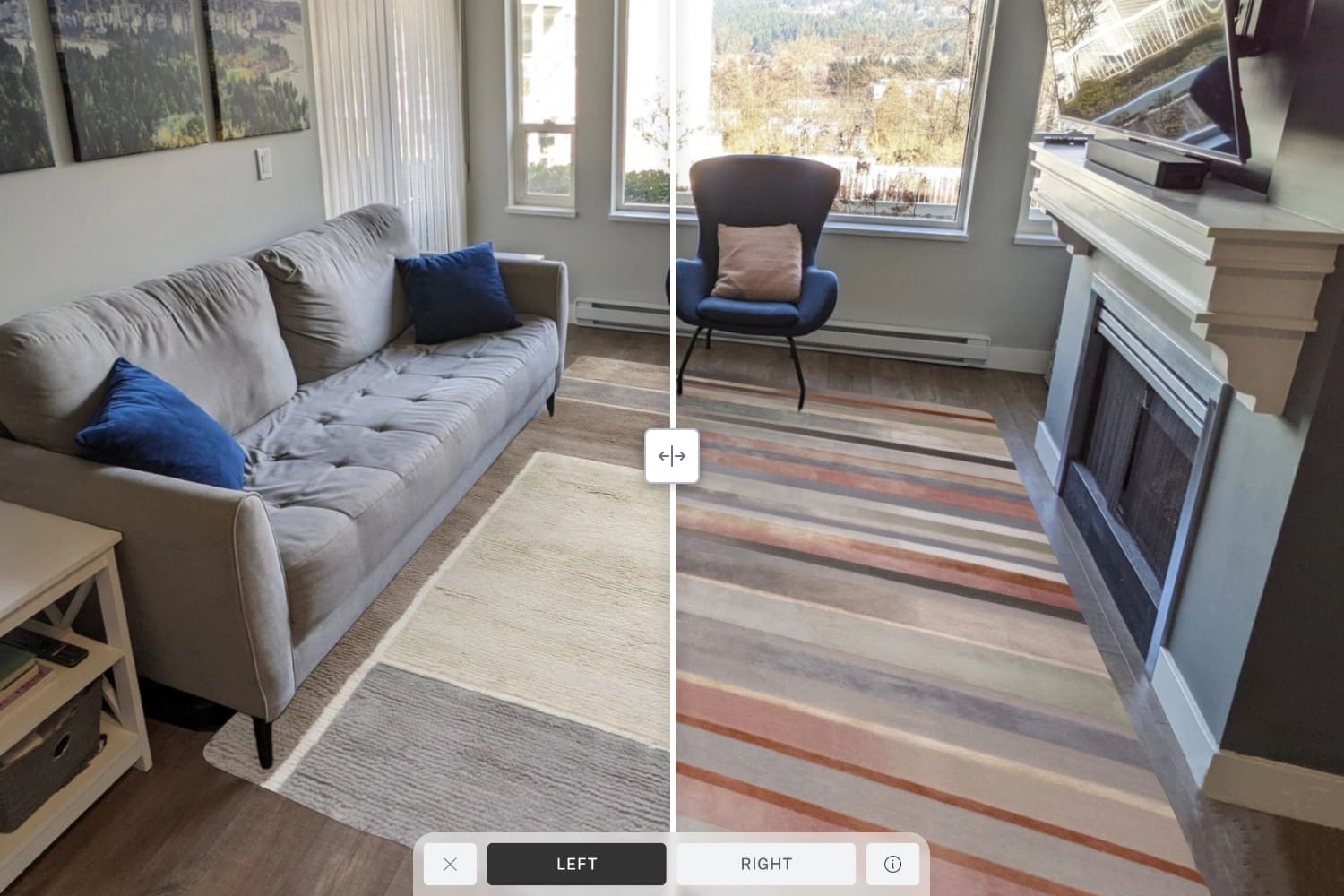Product sampling has long been an important step in the home decor buying journey.
And you can understand why.
When a customer is thinking about spending thousands of dollars on a product that will be displayed in their home for years, maybe even forever, they’re going to want to inspect it closely before they commit to a purchase. And they’re definitely going to want to see how it looks in the space it’s intended for.
“Seeing is believing,” as they say.
Based on historical data from the flooring industry, dealers who lend samples to customers see around 4% higher close rates than those who don’t. So, for retailers and manufacturers alike, getting your product samples into the hands — and homes — of your customers is a great way to get your products into their homes for good.
At the same time, sampling costs manufacturers and distributors millions of dollars every year. And it comes with other potential challenges, including an inability for customers to see your products in their entirety, limited inventory of your best sellers, samples that leave your showroom and never get returned, and the logistical headache of sample checkout and tracking, to name a few.
These will look a little different for each business, of course, depending on how you manage your samples. No matter your business model, here are some of the different ways room visualization can help you optimize your sampling process and maximize your sales.
Show customers the whole picture
In addition to helping customers experience the true look and feel of your products, samples are meant to show customers how those products will look once installed in their homes.
And therein lies one of the biggest challenges.
Samples, by their very definition, only show part of the picture. Customers are expected to place them on their floors, walls, or countertops, for example, and try to imagine what their whole room will look like based on something that only covers a fraction of the surface.
Easier said than done.
“With things like wood and laminate type products, you have variation and you want to be able to see that across the floor, versus a six by six-inch sample,” Todd Skidmore, senior director of eCommerce for Mohawk Flooring, told Floor Covering Weekly.
The solution for Mohawk, and thousands of other home decor brands, is Roomvo’s industry-leading room visualization platform. Roomvo shows customers the whole picture by allowing them to virtually preview your floors, rugs, countertops, wall coverings, and paint in their own homes. They just need to upload a photo of their room, select the product they want to see, and Roomvo takes care of the rest, instantly producing a lifelike rendering with your product inserted into the scene.
For consumers, this eliminates the guesswork and leads to more confident purchasing decisions. And for retailers and manufacturers, it’s been proven to increase conversions by up to 5x, making it a perfect complement to your sampling strategy.
Never run out of samples
Usually, the samples of your best-selling products will be in the highest demand. So, if you’re only carrying a limited number of samples, it’s very possible that you’ll run out of inventory.
And this could mean lost sales.
“A lot of the time, customers want to see your hottest selling line, but every time the hottest selling line leaves the store, it’s no longer in the store for the next consumer to see,” said Scott Levy, president of Arley Wholesale Inc., the leading tile, stone, metal, and sundry products distributor on the United States East Coast. “So, we looked at the different cost scenarios and wondered, why not do it digitally?”
That ultimately led them to Roomvo.
With Roomvo, customers can visualize any single one of your products in their homes — beyond the samples you have available. In fact, customers who upload a photo of their room to your Roomvo visualizer will view an average of 16 to 20 products in their space, according to Roomvo vice president of revenue, Josh Ruff. This often includes higher margin items they may not have previously considered.
Don’t limit yourself to the samples you have in your showroom. Instead, give customers access to your entire product catalogue and let them dream about a new world of design possibilities.
Eliminate the waiting game with Virtual Samples
Shopping for home decor/improvement products is a lengthy process. In fact, according to research from Shaw Floors, the average buying journey for flooring is 149 days from start to finish. And that’s partly due to the inevitable delays associated with physical sampling.
Roomvo helps speed up the sales cycle by instantly placing your products in your customer’s home, which creates an emotional connection that drives quicker purchasing decisions.
“When customers can imagine the product in their homes, that’s when they fall in love,” Levy said.
This, in some cases, “eliminates the need for physical samples,” as The Home Depot stated in the launch of their Roomvo-powered visualizer. While their physical samples are still available for purchase, The Home Depot is one of several major brands that also offer Roomvo’s 3D Virtual Samples, allowing customers to rotate and zoom in on their products and explore them under natural and artificial lighting conditions.
Virtual Samples delivers an intimate experience with your products anytime, anywhere, without the limitations of physical samples. For easy access and a seamless shopping experience, Virtual samples can be placed directly on your product pages. This immersive digital solution helps reduce the costs and logistical challenges associated with physical samples, meet the growing demands of today’s consumers, and remove some of the major barriers that could be delaying their purchases.
Add visualization to your sampling strategy
Perhaps in the future, shopping for home decor will become a full e-commerce solution. But that’s not necessarily the case today. A lot of businesses still rely on physical samples and have benefited greatly from incorporating Roomvo into their sampling strategy.
This doesn’t have to be an “either/or” scenario.
Instead, you can affix QR codes to your physical samples, linking to the corresponding products in your visualizer. This works for manufacturers like Caesar Ceramiche, who distribute samples to their retail partners with Roomvo QR Codes attached. Then, in the showroom, shoppers can scan these samples to see the products come to life in their homes.
QR codes are also useful for e-commerce-only retailers like Tile Warehouse, who ship samples directly to consumers. The most important metric for Tile Warehouse is whether they’re converting samples into full orders. And that’s where they’ve seen Roomvo’s biggest impact. By showing customers how the product will look in their home, they’re more likely to purchase.
If you’re a traditional brick-and-mortar business, you can also bring the visualization experience into your showroom with Roomvo Kiosk. Instead of taking your samples home, customers can scan their QR codes and see your products come to life — right then and there — on a giant touchscreen terminal built specifically for room visualization, helping to drive on-the-spot sales.
Either way, when a customer has a physical sample in hand, and is then able to visualize that product in their home, you’re giving them the best of both worlds.
And this, undeniably, will lead to more sales.
The future of sampling
The way people are shopping for home decor continues to change, as new technologies emerge and e-commerce becomes more of a viable solution. While product sampling will always be a part of the equation, at least to some degree, home decor brands ought to consider how room visualization can help future-proof your business and ensure you’re making the most of your sampling strategy.
Written by:
-

Farhan Devji is a published author and content writer who’s written for some of Canada’s biggest newspapers and worked in communications/marketing for close to a decade. His new book, Alphonso Davies: A New Hope, was published in May 2023 with ECW Press.






